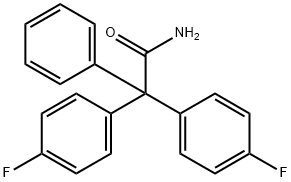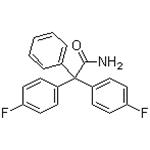Description
Senicapoc is an inhibitor of intermediate conductance calcium-activated potassium (IK
Ca1/K
Ca3.1) channels. It inhibits rubidium efflux from and dehydration of isolated human red blood cells (RBCs) induced by the calcium ionophore A23187 (; IC
50s = 11 and 30 nM, respectively). Senicapoc (10 mg/kg twice per day) reduces IK
Ca1/K
Ca3.1 channel activity, increases potassium levels in RBCs, and decreases erythrocyte density in the SAD transgenic mouse model of sickle cell disease. It inhibits IL-2, IFN-γ, IL-12, and IL-17A production in CD3
+ T cells stimulated with phorbol 12-myristate 13-acetate (PMA; ) and ionomycin (Item Nos.
10004974 |
11932) when used at a concentration of 1 μM. Senicapoc (100 mg/kg) increases the paw withdrawal threshold in a rat model of chronic constriction injury (CCI) of the sciatic nerve.
Definition
Senicapoc (ICA-17043; bis(4-fluorophenyl)phenyl acetamide), a selective, highly potent Gardos channel blocker (IC50 = 11 nM), specifically inhibits the efflux of potassium from the RBCs of both SCD transgenic mice and human sickle cell disease patients. It is derived from clotrimazole-1, a KCNN4 inhibitor. Senicapoc is well tolerated by both healthy volunteers and patients with SCD and has favourable pharmacokinetics, with a long half-life permitting once-daily dosing. It was designed for long-term sickle cell disease therapy to avoid clotrimazole-1 side effects. Whereas Senicapoc is a potent inhibitor of WT KCNN4, its efficiency on mutated channels was unknown[1-2].
References
[1] Raphael Rapetti-Mauss. “Senicapoc: a potent candidate for the treatment of a subset of hereditary xerocytosis caused by mutations in the Gardos channel.” Haematologica 101 11 (2016): e431–e435.
[2] Kenneth I Ataga. “Efficacy and safety of the Gardos channel blocker, senicapoc (ICA-17043), in patients with sickle cell anemia.” Blood (2008): 3991–7.



